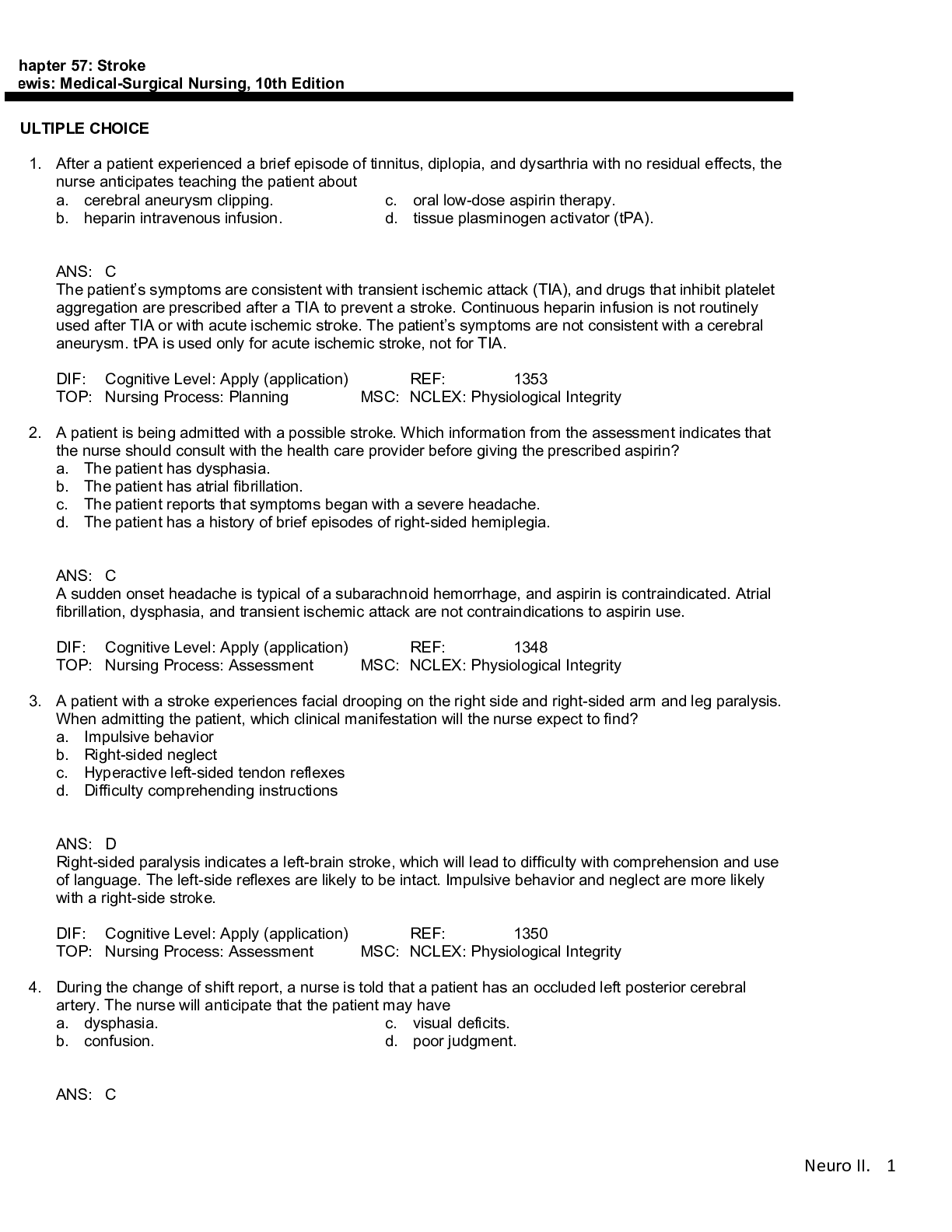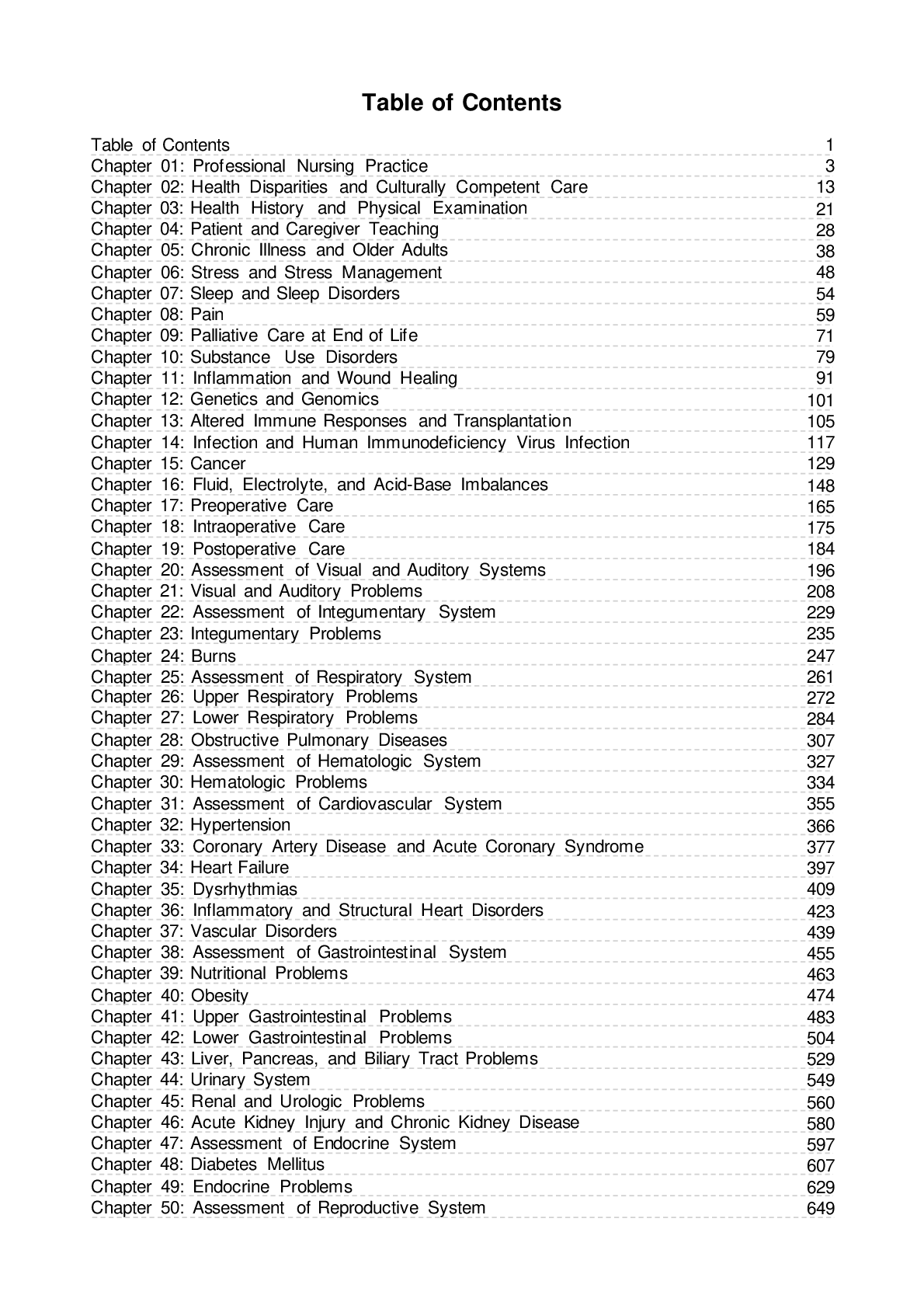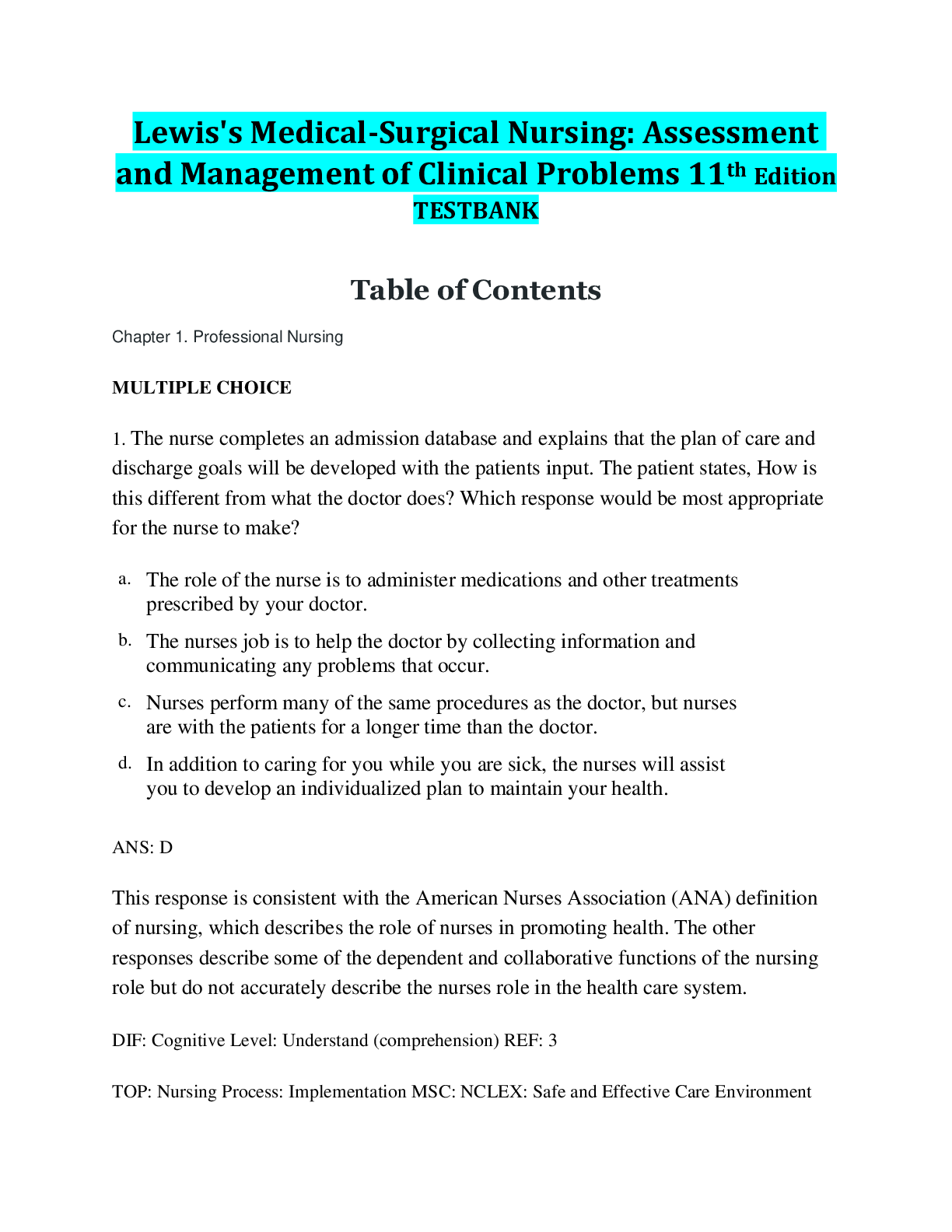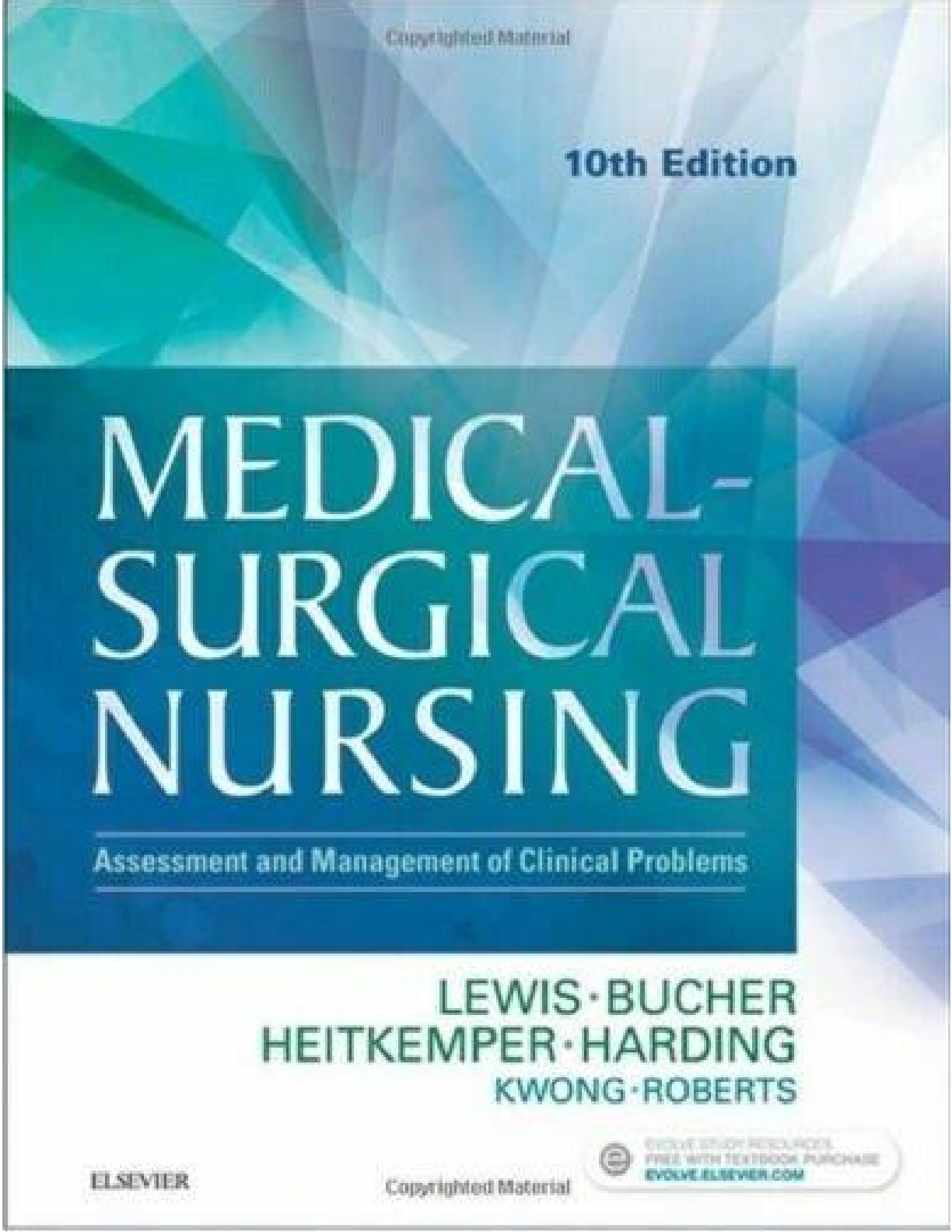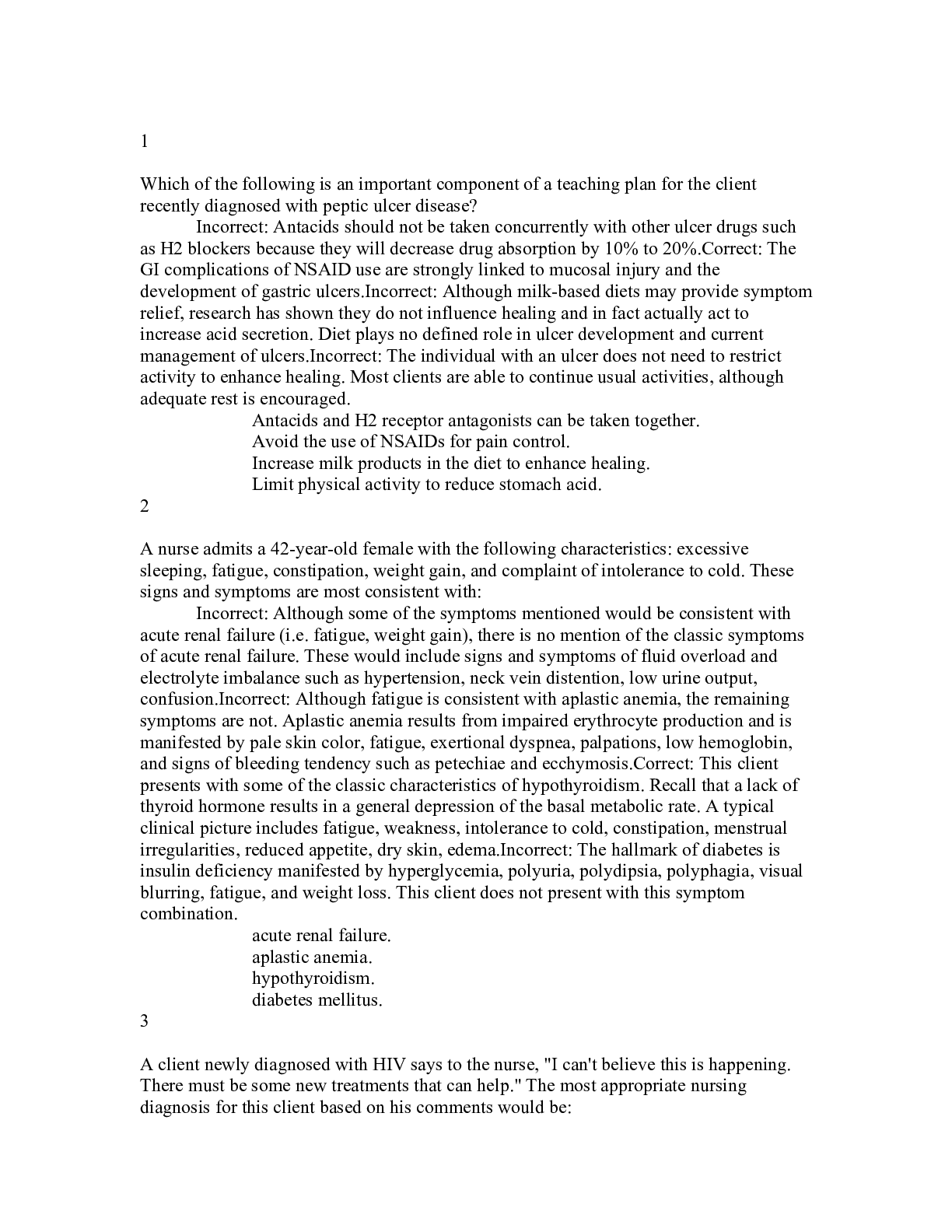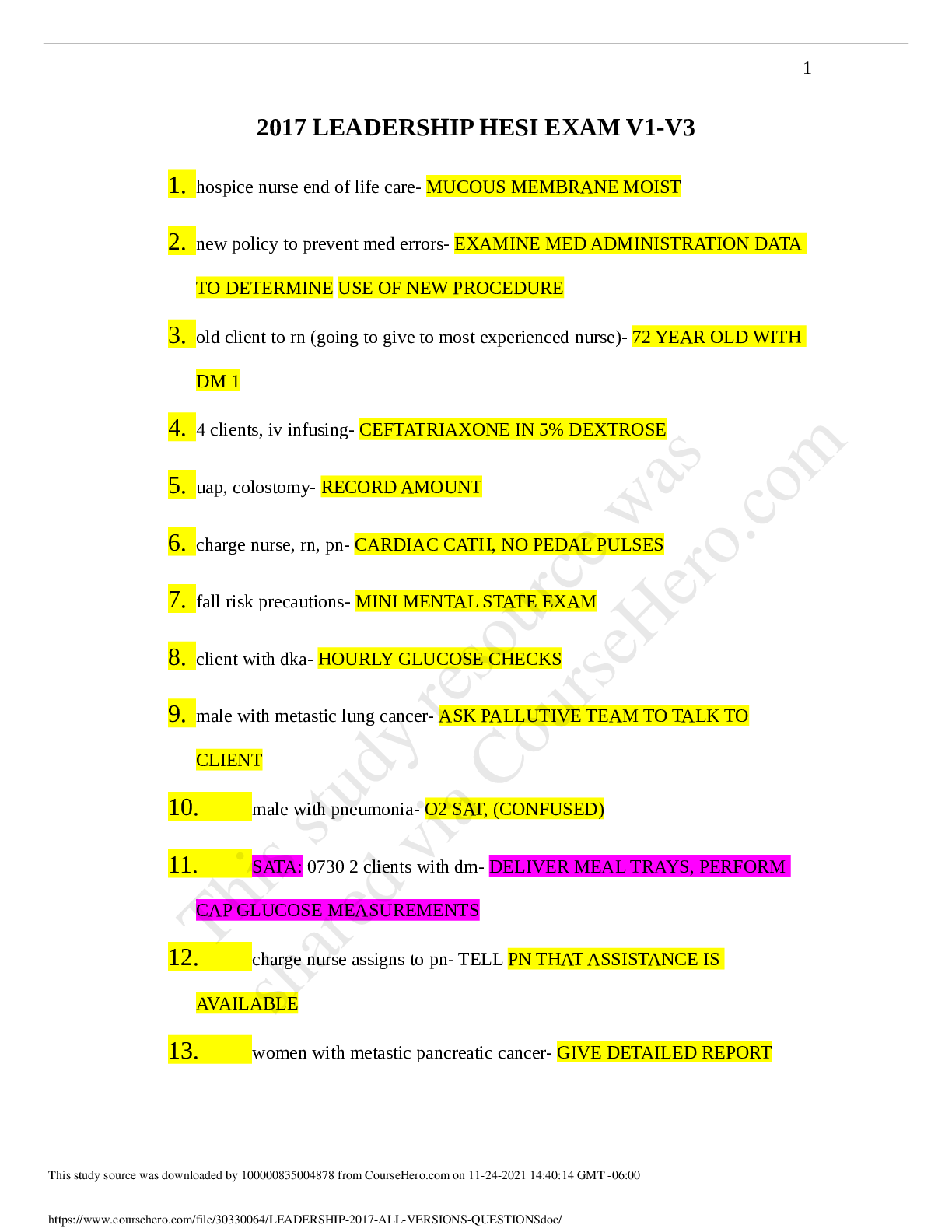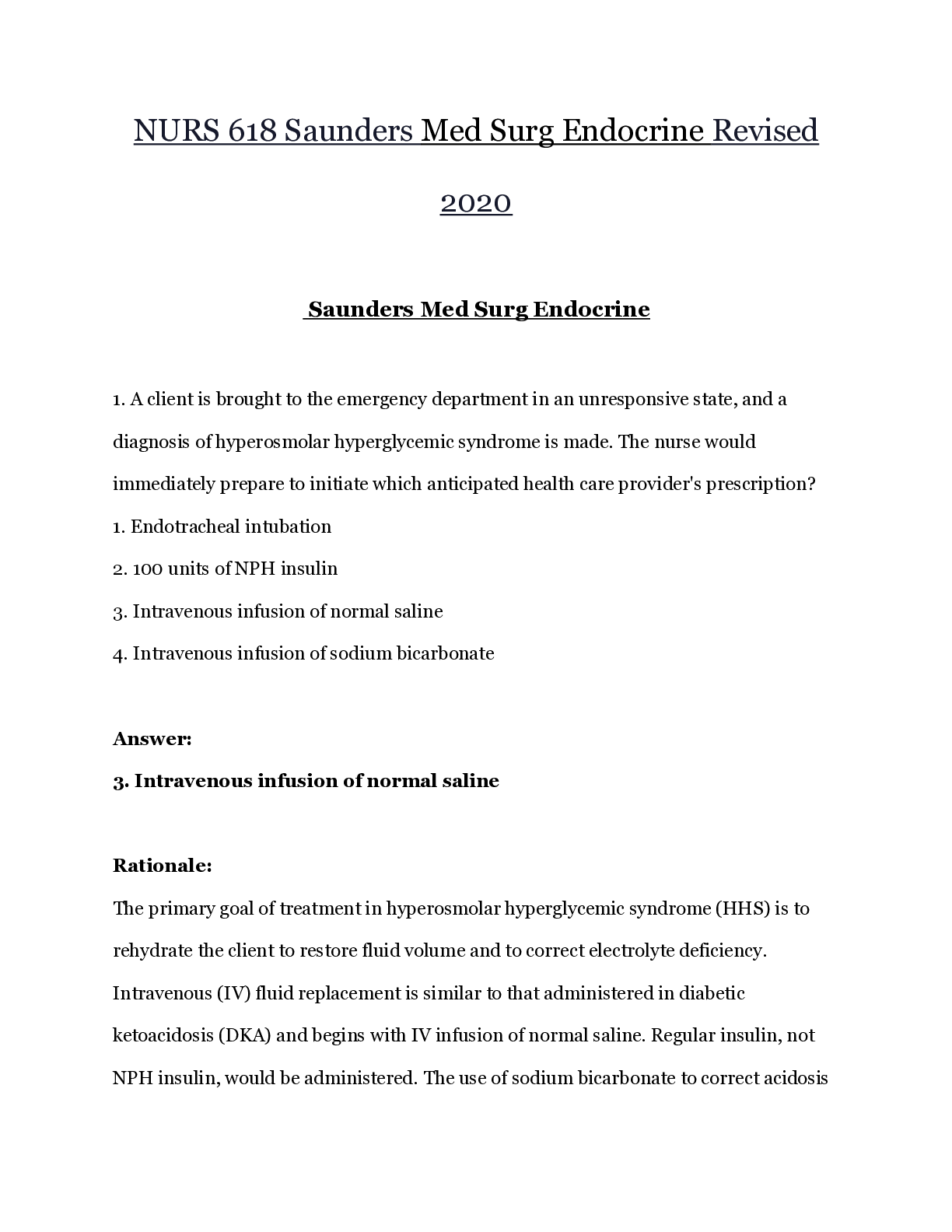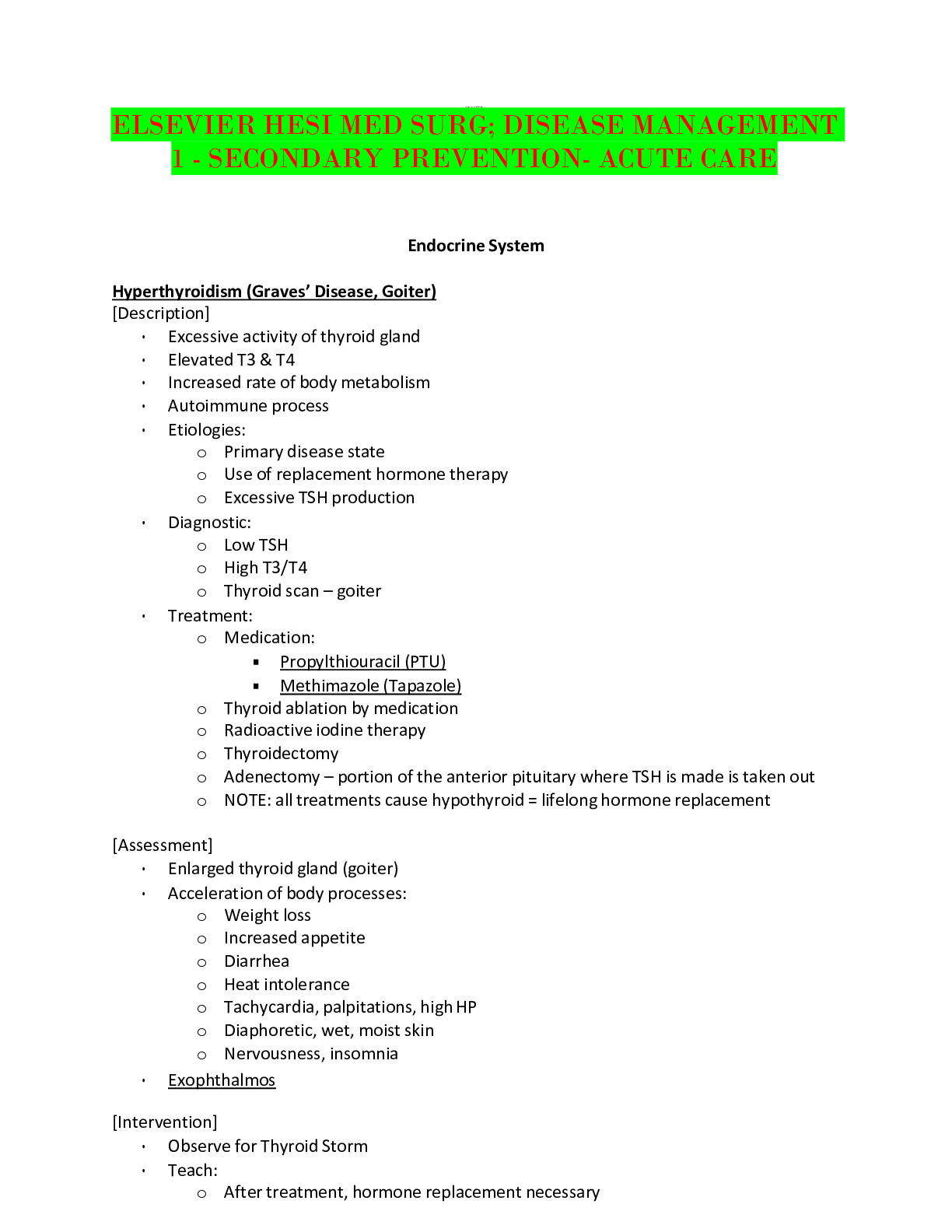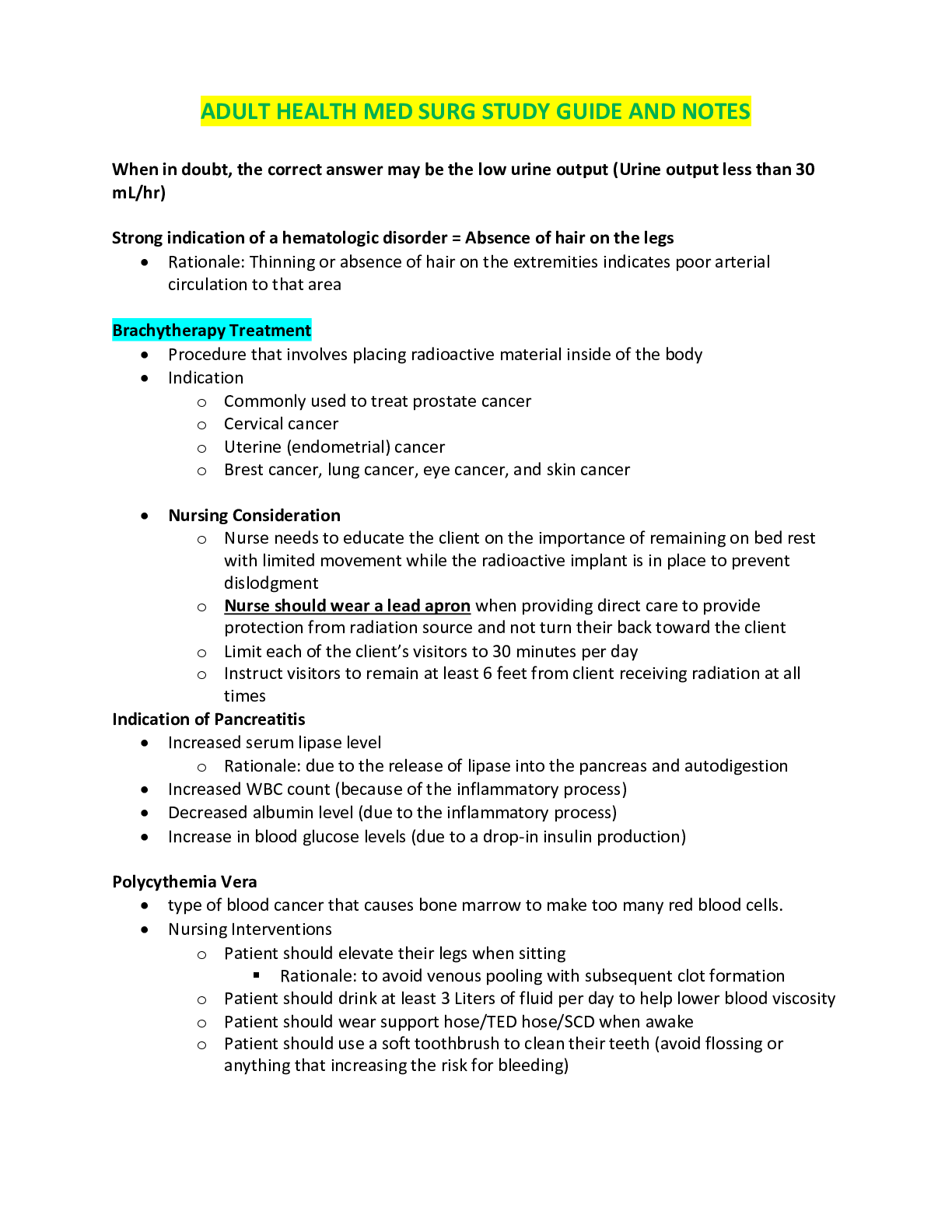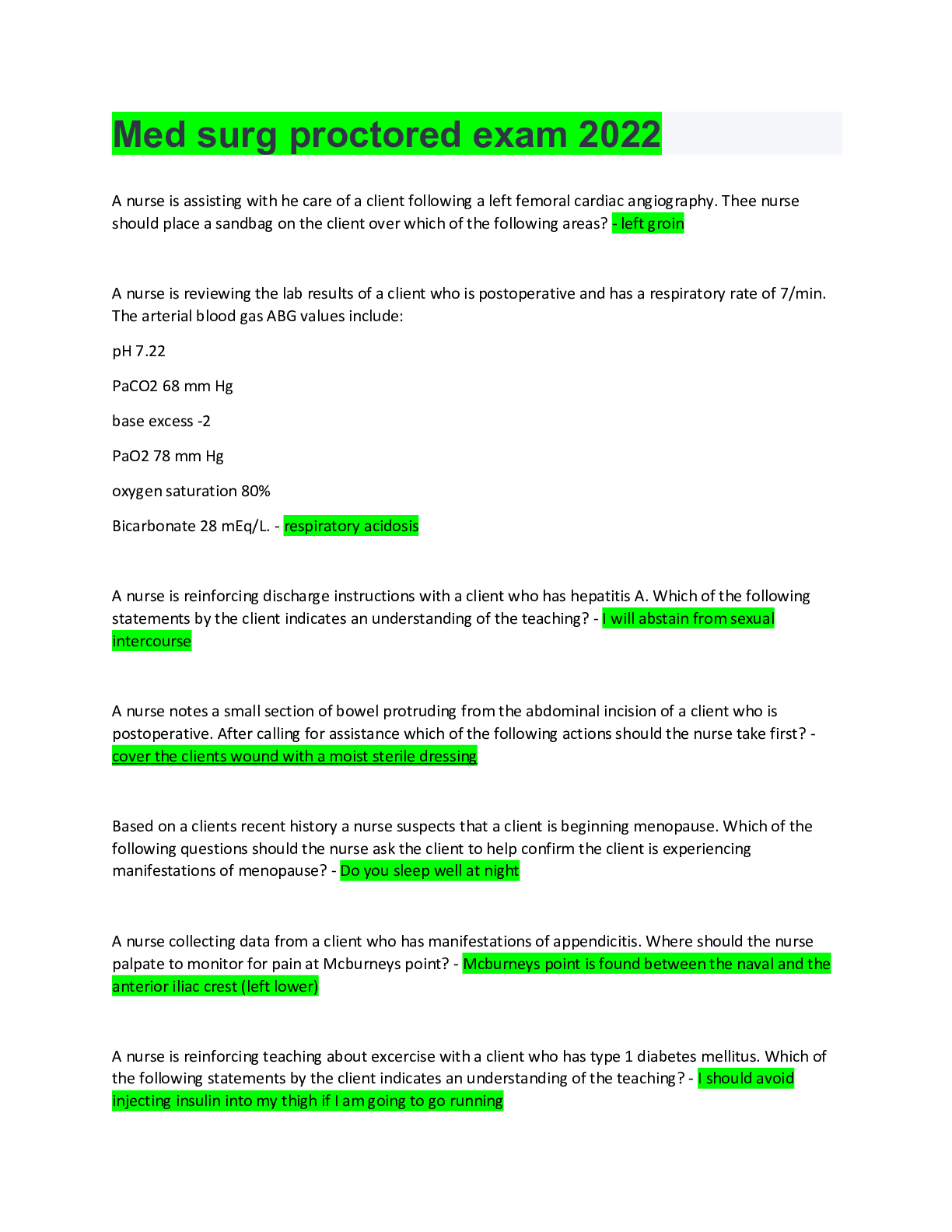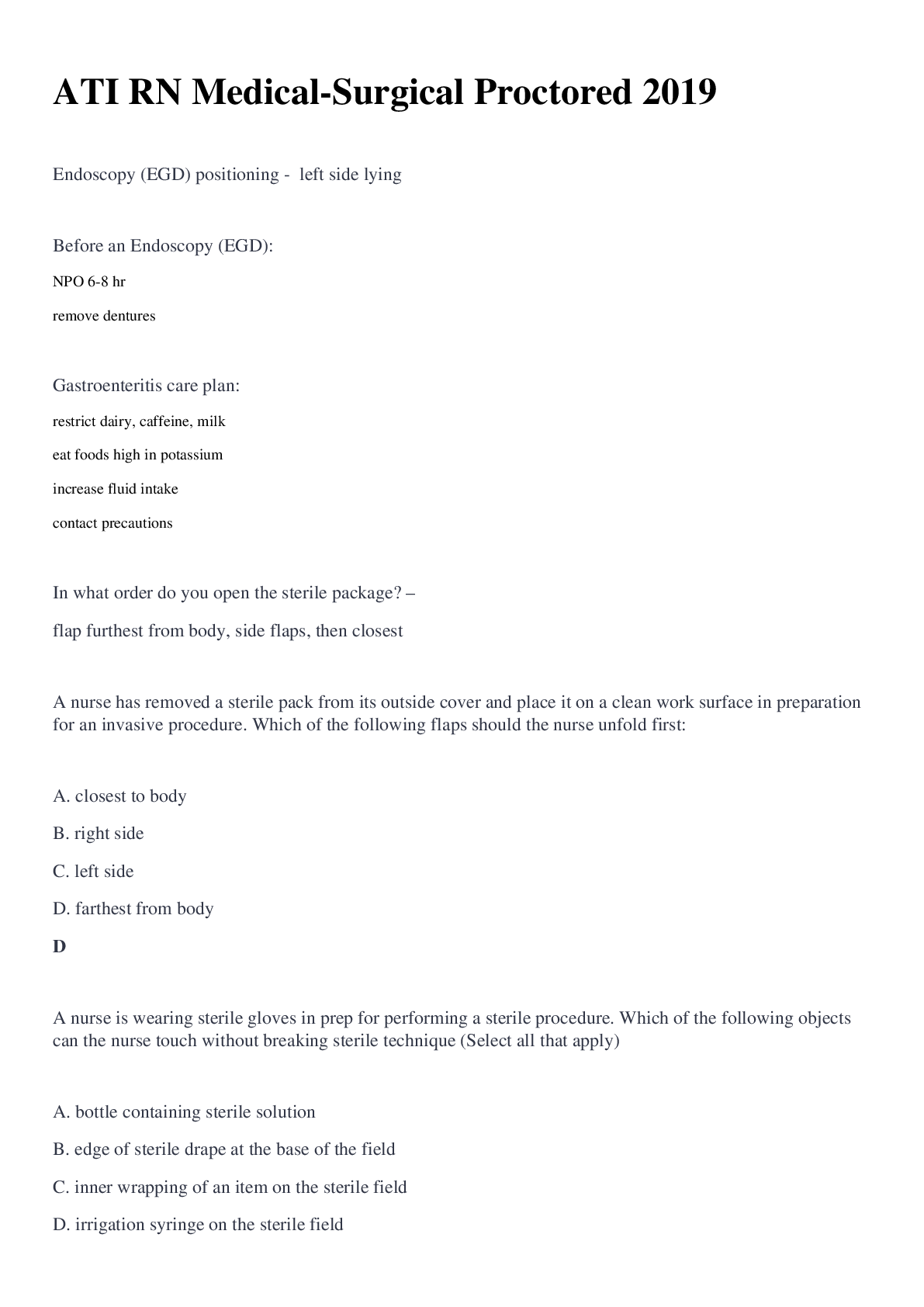*NURSING > MED-SURG EXAM > Test Bank - Medical-Surgical Nursing: Assessment and Management of Clinical Problems 10e=> Solution (All)
Test Bank - Medical-Surgical Nursing: Assessment and Management of Clinical Problems 10e=> Solution to best grades
Document Content and Description Below
Because spironolactone is a potassium-sparing diuretic, patients should be taught to choose low-potassium foods (e.g., apple juice) rather than foods that have higher levels of potassium (e.g., citru... s fruits). Because the patient is using spironolactone as a diuretic, the nurse would not encourage the patient to increase fluid intake. Teach patients to avoid salt substitutes, which are high in potassium. DIF: Cognitive Level: Apply (application) REF: 283 TOP: Nursing Process: Implementation MSC: NCLEX: Physiological Integrity 7. A newly admitted patient is diagnosed with hyponatremia. When making room assignments, the charge nurse should take which action? a. Assign the patient to a room near the nurses station. b. Place the patient in a room nearest to the water fountain. c. Place the patient on telemetry to monitor for peaked T waves. d. Assign the patient to a semi-private room and place an order for a low-salt diet. ANS: A The patient should be placed near the nurses station if confused in order for the staff to closely monitor the patient. To help improve serum sodium levels, water intake is restricted. Therefore a confused patient should not be placed near a water fountain. Peaked T waves are a sign of hyperkalemia, not hyponatremia. A confused Test Bank - Medical-Surgical Nursing: Assessment and Management of Clinical Problems 10e 150 patient could be distracting and disruptive for another patient in a semiprivate room. This patient needs sodium replacement, not restriction. DIF: Cognitive Level: Apply (application) REF: 280 TOP: Nursing Process: Planning MSC: NCLEX: Physiological Integrity 8. IV potassium chloride (KCl) 60 mEq is prescribed for treatment of a patient with severe hypokalemia. Which action should the nurse take? a. Administer the KCl as a rapid IV bolus. b. Infuse the KCl at a rate of 10 mEq/hour. c. Only give the KCl through a central venous line. d. Discontinue cardiac monitoring during the infusion. ANS: B IV KCl is administered at a maximal rate of 10 mEq/hr. Rapid IV infusion of KCl can cause cardiac arrest. Although the preferred concentration for KCl is no more than 40 mEq/L, concentrations up to 80 mEq/L may be used for some patients. KCl can cause inflammation of peripheral veins, but it can be administered by this route. Cardiac monitoring should be continued while patient is receiving potassium because of the risk for dysrhythmias. DIF: Cognitive Level: Apply (application) REF: 283 TOP: Nursing Proce [Show More]
Last updated: 1 year ago
Preview 1 out of 913 pages
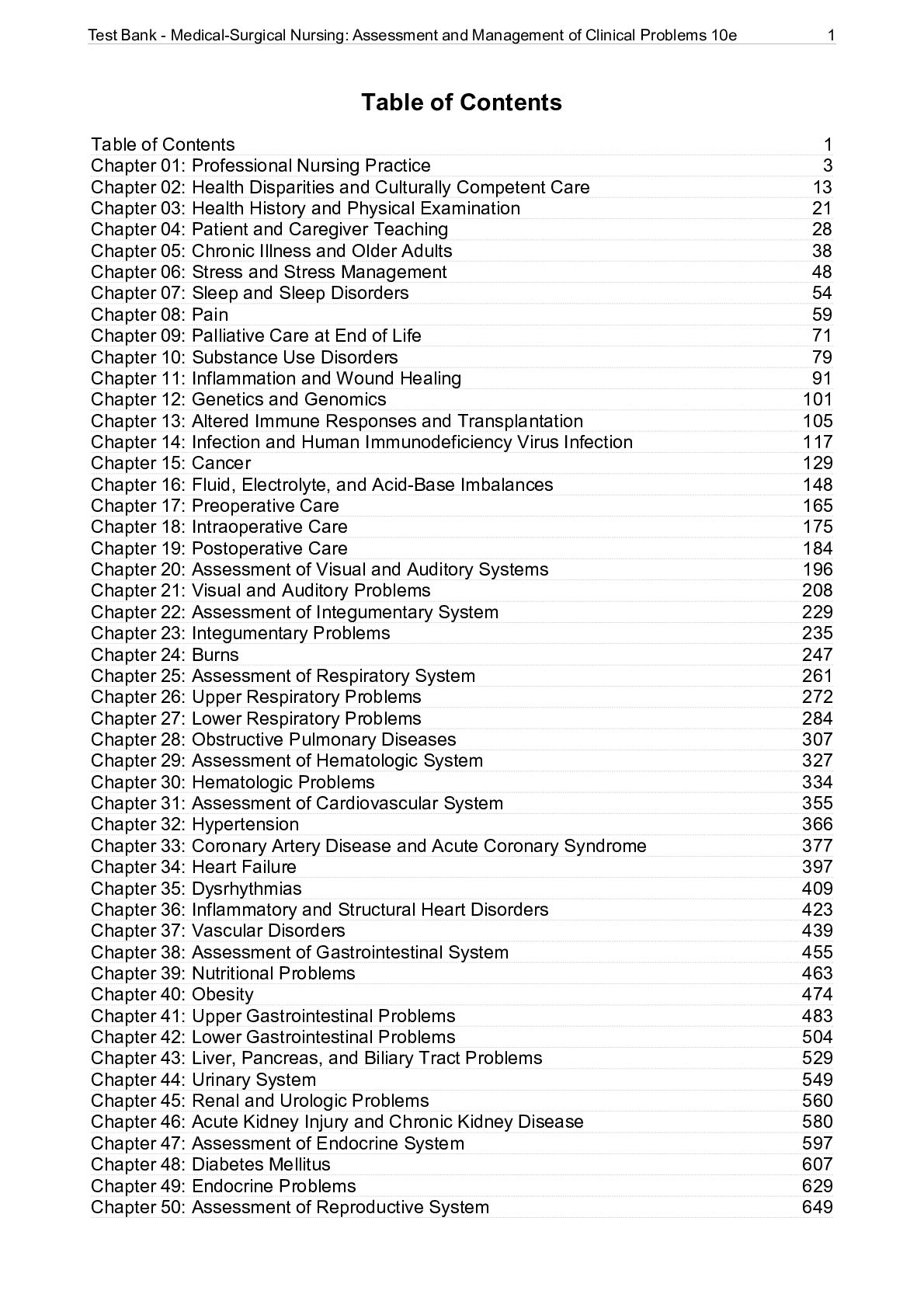
Reviews( 0 )
Document information
Connected school, study & course
About the document
Uploaded On
Aug 14, 2021
Number of pages
913
Written in
Additional information
This document has been written for:
Uploaded
Aug 14, 2021
Downloads
0
Views
54




